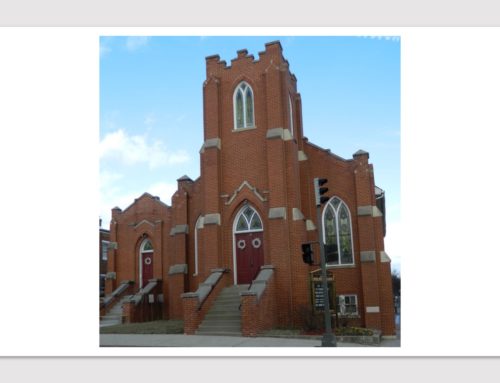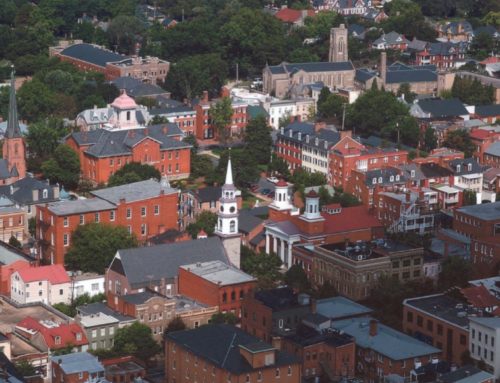Excerpt from the Frederick News-Post:
Frederick Economic Development Director Richard Griffin brought six flip charts with information about mitigating the historic elements of the Birely Tannery building for the proposed downtown hotel and conference center to a private meeting last week with representatives and stakeholders.
The meeting was the second members of the Maryland Historical Trust and state Department of Housing and Community Development hosted to help develop a plan for adequately preserving the historic elements of the tannery building and site, which the city’s Historic Preservation Commission have determined are contributing resources to the Frederick Town Historic District.
The tannery building is set for demolition as part of the plans to construct a multi-million dollar hotel and conference center at 200-212 East Patrick St. with both public and private dollars.
Griffin said the group, which included project partners, key stakeholders and representatives from local groups that have missions related to preserving cultural resources, spent about two hours Tuesday brainstorming ideas for mitigation. The ideas, which were noted on six flip charts, included plans for archeological work and public art to using materials from the demolished tannery building in the construction of project facilities. Specific ideas like having a video that explains the historic details, and displaying interpretive signage and artifacts within the hotel and conference center and surrounding areas were all thrown around, Griffin said.
“People want to tell the story about the tannery and the human component, the human capital, telling the story of what life was like at that time,” he explained.
He pointed out that it is more than just the building, but also the archeology of the site, that is historic, as tanning was not actually performed inside the building. That fact and others about the operations that began in the 19th Century are important to include in the plans, Griffin said.
Once the list is narrowed down and formulated members of the Trust, DHCD and the developers will go through it and choose which things make the most sense for mitigation and bring it back to the Historic Preservation Commission, Griffin said.
Meetings like the one held Tuesday are required as part of the Maryland Historical Trust Act of 1985’s consultation process, which requires state agencies to consult with the Trust on projects receiving assistance. The downtown hotel project is set to receive money from the DHCD. Representatives from the department formulated the guest lists and invited attendees. Griffin explained the meetings are not required to be open to the public, however he said members of the public will have plenty of chances to weigh in on the decisions at future public city government meetings.
According to the existing project budget, developers Plamondon Hospitality Partners are planning to fund construction of the hotel and conference center with $16.5 million of city, county and state money to be used for amenities such as land acquisition, site preparation, utilities and on-site public parking.



